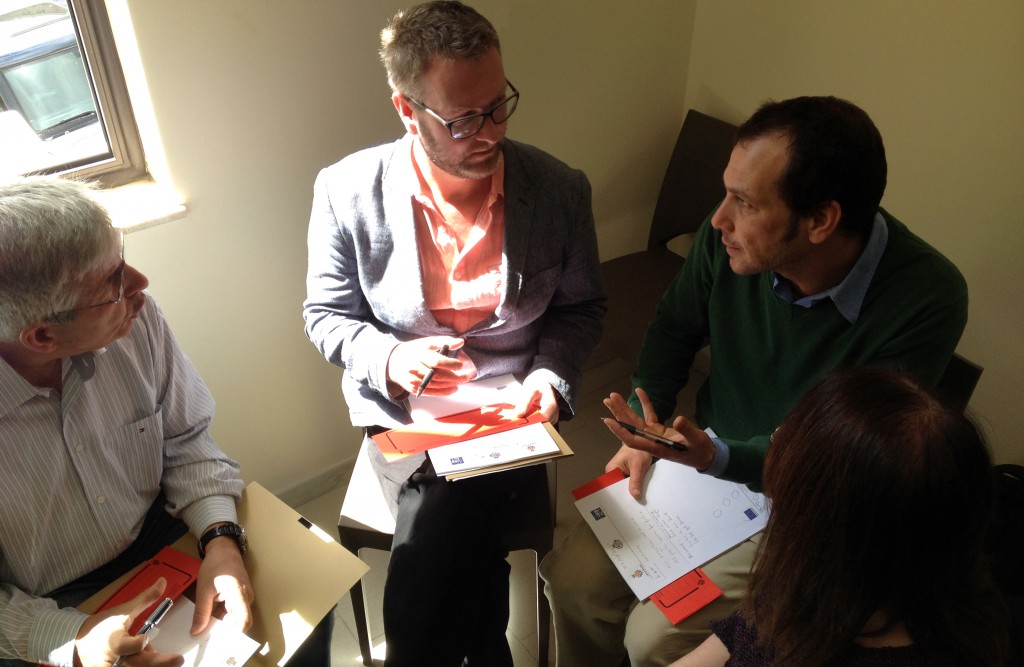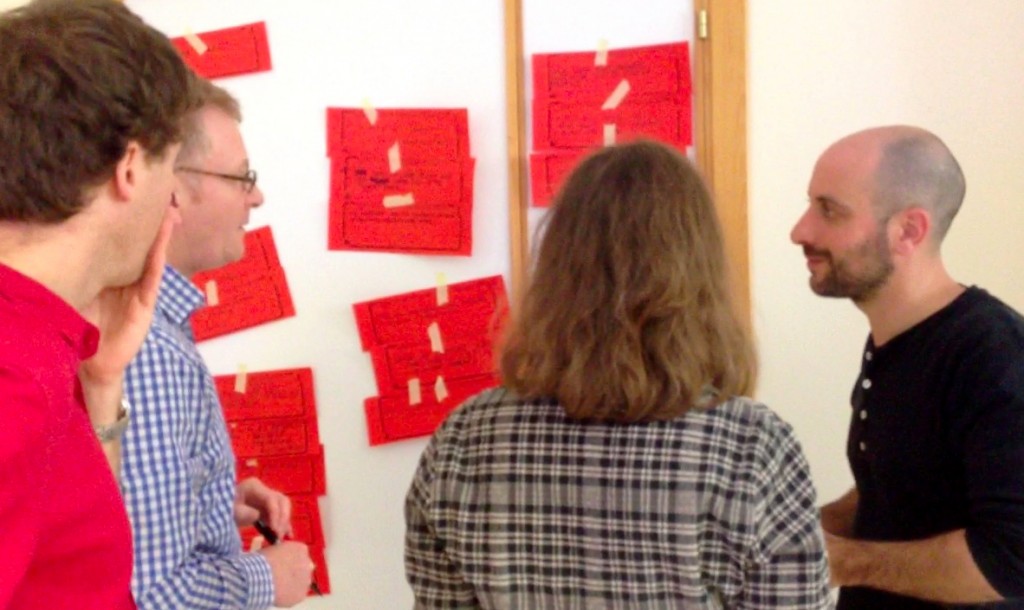Evil projections: What to avoid? / Workshop
Participating partners work hard following the URBACT process, engaging a strong local support group, building an efficient local action plan and certainly struggling all to avoid the many obstacles that may stop the process… But do we really know these obstacles? How can we make these fuzzy threats that we have in the back of our minds more tangible and clear? Can we share them in order to make all local stakeholders aware of what they should avoid?
The ‘Evil Projection’ tool aims is to collectively give visibility to the potential threats to the URBACT process and share them either at transnational level (in order to discover counterintuitive threats) or at the local level (in order to strengthen each player capability to avoid them).
For that a short projective exercise in small groups is set-up to creatively generate the largest panorama of threats to the URBACT process. The brief is formulated as such: “2016: the URBACT process failed in your city, the ULSG dissolve rapidly, LAP was not implemented, local authorities and elected representatives avoids now the topic, stakeholders are upset, citizens disengaged, etc. Why did the network fail to meet its expectations/potential?”
Each subgroup fill in formats with 3 to 5 key-mistakes to avoid… The exercise may looks strange for the risk to reduce the enthusiasm of the participants but it is the contrary that happen: for half an hour participants are allowed to be negative but they should be creatively negative, imaginatively perverse to think to all problems that may arise in order to reinforce their awareness and capability to avoid them!
What did we get from the Evil Projection exercise the Sustainable Food in Urban Communities network conducted during March 14 meeting in Messina?
Many different threats arise from the 7 subgroups, more than 25 points describing a strong and rich threatening environment. Which is at first sight not particularly good news revealing the difficulty of the task…
Following classical categories of foresight methodologies, threats emerged could be classified as factors independent from the URBACT process and factors that are directly depend from the setting and governance of the URBACT process and therefore more in our focus.
Independent threats are for instance:
- Political instability during election year;
- Lack of clean soils;
- Financial interest in building housing putting pressure on available urban land for agriculture.
Threats depending from the URBACT process can be clustered in three groups.
Too much!
A first group of threats relates to oversized and over-promising or over-expecting objectives:
- Too ambitious action plan, too high expectations with a deceptive effect among stakeholders when just the achievable has been achieved,
- Too top-down and dogmatic ‘eco-religious’ LAPs
- Too extremist visions within the local support group that finally reveal to be not achievable,
- Too many egos within the round of stakeholders involved blocking the process,
- Too narrow-minded postures with no awareness of possible opportunities,
- Too academic LAPs, not understandable, usable, communicable that remain on the shelf.
Not enough!
A second group of threats relates to processes lacking of qualities and perspectives:
- Lack of vision, in particular of long term visions at political level,
- Lack of clear objectives, only short term projects dispersed without coherence and synergies,
- Lack of focus leading to no results due to spreading of resources,
- Lack of substance of administrative only projects tuning into a purposeless reporting exercise,
- Lack of representativeness in particular when stakeholders in the local support group are not relevant enough to the subject,
- Lack of engagement of stakeholders, of commitment and ownership in the planned actions,
- Lack of cohesion and fragmentation in competing interested groups,
- Lack of coherence and lobby interests blocking LAP despite it has been ratified,
- Lack of links between the different administrative entities,
- Lack of priorities within the selection of actions leading to the dispersion of funds.
So what?
A third and last group of threats relates to very fact that the project end with no provisions and perspectives:
- No long term governance in which the LAP could integrate,
- No organization structure able to support the process afterward,
- No funding or co-funding available for implementation,
- No support from citizens and perspective in the market,
- No interests by the managing authorities.
At the end of the exercise, the results are shared and clustered. Top threats are should be identified by all the participating stakeholders and the effect on the group is definitely stimulating: threats have been explicitly formulated and pointed as clear obstacles; other less expected threats may have been identified; stakeholders are mobilized to avoid them…

